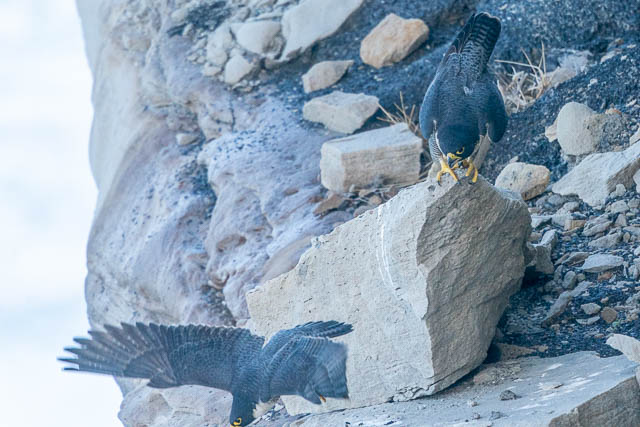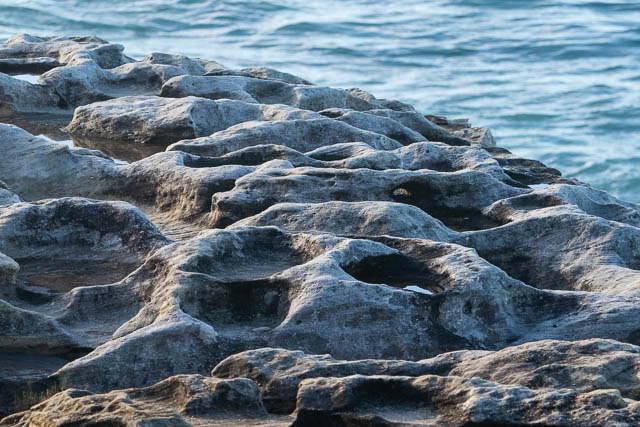After the Mudlarks Bird Survey, I met up with Jo, Chris and Pat from the Greenway Bird Group and we headed to Maroubra Beach to visit Malabar Headland National Park. I had told Jo and Chris about the pair of Peregrine Falcons that are nesting on the headland, and they, and Pat were keen to see them.

We walked out onto the headland. Not far out, we spotted our first raptor – a Nankeen Kestrel perched on a pole in the Rifle Range.

I was hoping it would take off and fly around a bit. But it seemed very settled. Then I noticed a Black-shouldered Kite hovering nearby. I pointed my camera at it, and then it suddenly dived out of sight.

The next birds were a flock of Superb Fairy-wrens. They were enjoying the warm sun.




We then entered the National Park. The seas were forecast to be big. They were, but not huge.

Here is an Australian Gannet –

And a Jacky Dragon –

There were a lot of New Holland Honeyeaters –



We walked out past Magic Point to where the Peregrine Falcons can often be found. I looked around their usual perches but could not spot any of them. Then a little further along, I looked down and spotted one perched on ledge below –

The others were very pleased to see this bird in the wild. The Peregrine Falcon looked up and could see us, but seemed unconcerned. Then we all witnessed a remarkable spectacle. The falcon bent over and all of sudden the second of the pair, the male, flew down and they started mating.











This was amazing to observe. The male on top was so careful with its talons. Later, checking my photos, I found the birds took 11 seconds to mate. The male then flew off, perhaps to the nest? I suspect they are sitting on eggs in the nest, and it is interesting to see that they are still mating. Apparently this is common for raptors. Last year, I had seen and photographed the same pair mating. That was in July.
I moved to see if you could observe the female from a different angle. You could, but it soon took off. This was before the others could see it.



Peregribe Falcons often give clear signs that they are about to take off, if they have been perched for a while. The female gave all the signs – it stretched it wings, ruffled its feathers, and then did a poo. So I was ready with my camera for a take-off sequence.


Unfortunately, it took off away from me. Not good for photos.





It then flew off around Boora Point.
We all had lunch. While we were eating, we spotted some very distant whales breaching. Too far away to bother with photos.
Then the others were heading back. They were well satisfied with what they had seen. Before they left, I showed them the Aboriginal sharpening grooves –

I then kept a lookout to see if any of the Peregrine Falcons would appear.

I walked out to Boora Head and back a few times. Here is a New Holland Honeyeater calling out –

Then, one of the Peregrine Falcons suddenly appeared. It landed on the same perch it was on earlier.

It was the female. Its there for a while and then started calling. A fairly quiet whimpering call. I though perhaps it may want some food?

I was hoping its mate might arrive with some food and then I could photograph a mid-air food exchange. But no. Its mate did arrive, but had more amorous intentions. They mated again.









Again, it was over in 11 seconds.

Soon after, the female gave the same signs that it was ready to take-off. I was ready too with my camera. This time the angle was better (but the light was poorer!)










I think the male had earlier flown off to the nest. The female seemed to fly under the cliffs to the same location.
It was time to start wandering to the bus stop. took a few more photos on the walk out. Here is another New Holland Honeyeater –



And one last bird, a Red-browed Finch –

